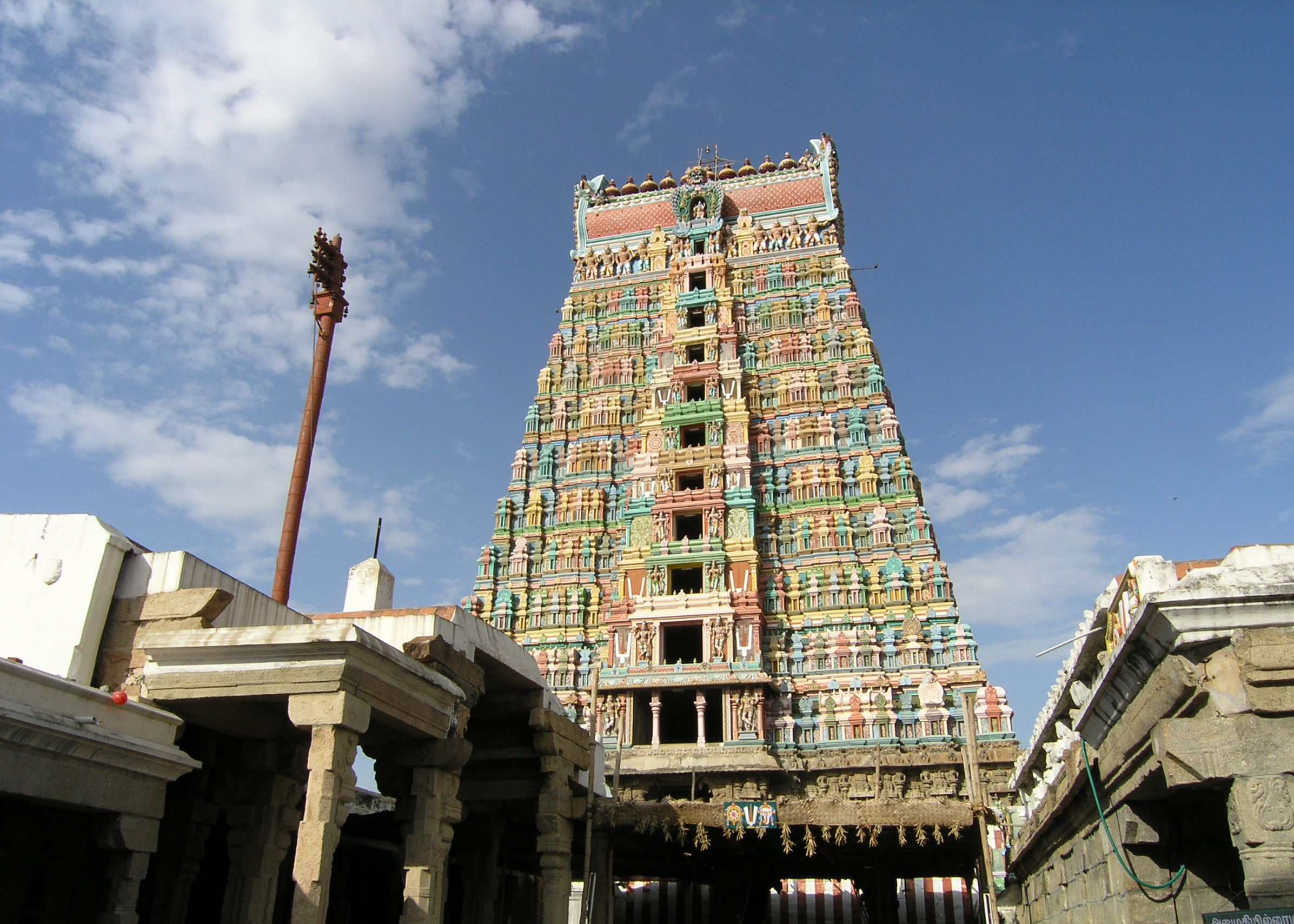|
Periyazhvar
Periyalvar (), also known as Vishnuchittar, was one of the twelve ''Alvar'' saints of South India who are known for their affiliation to the Vaishnava tradition of Hinduism. He was the foster father of Andal. Andal, also called as Kodhai, is the only female Alvar, and is considered to be the incarnation of Bhudevi according to Sri Vaishnavism. The verses of ''Alvars'' are compiled as the ''Naalayira Divya Prabandham'' and the 108 temples revered are classified as ''Divya Desam''. According to some accounts, Periyalvar is considered the first in the line of the twelve Alvars, while other accounts place him as the eighth. His original name was Vishnuchittar. Since he blessed Vishnu as though assuming he were an elder to the deity, he is called Periyalvar. According to Hindu legend, Periyalvar was the foster father of Andal, the only female Alvar. The works of Periyalvar contributed to the philosophical and theological ideas of Vaishnavism, the proponent behind the Bhakti movemen ... [...More Info...] [...Related Items...] OR: [Wikipedia] [Google] [Baidu] |
Srivilliputhur
Srivilliputhur (), is a Municipality in Virudhunagar district in the Indian state of Tamil Nadu. As of 2011, the town had a population of 75,396. The most important landmark of Srivilliputhur is 11-tiered tower structure dedicated to the Vatapatrasayee (Vishnu), the presiding deity of Srivilliputhur Divya Desam. The tower of this temple rises 192 feet high and is the official symbol of the Government of Tamil Nadu. It is said to have been built by Periyalvar, in the year 788 CE and believed to be the adopted father of the Temple Deity, with a purse of gold that he won in debates held in the palace of Pandya King Vallabhadeva. Srivilliputhur is well known for its ancient heritage and devotional contributions. It is on the Virudhunagar - Sengottai line of the Southern Railway, about 74 km south of Madurai and connected by road and rail with Madurai, Rajapalayam, Sankarankovil & Sengottai, Sivakasi and Sattur. Etymology As per historical legend, the land around Srivilliput ... [...More Info...] [...Related Items...] OR: [Wikipedia] [Google] [Baidu] |
Hinduism
Hinduism () is an Indian religion or '' dharma'', a religious and universal order or way of life by which followers abide. As a religion, it is the world's third-largest, with over 1.2–1.35 billion followers, or 15–16% of the global population, known as Hindus. The word ''Hindu'' is an exonym, and while Hinduism has been called the oldest religion in the world, many practitioners refer to their religion as '' Sanātana Dharma'' ( sa, सनातन धर्म, lit='the Eternal Dharma'), a modern usage, which refers to the idea that its origins lie beyond human history, as revealed in the Hindu texts. Another endonym is ''Vaidika dharma'', the dharma related to the Vedas. Hinduism is a diverse system of thought marked by a range of philosophies and shared concepts, rituals, cosmological systems, pilgrimage sites, and shared textual sources that discuss theology, metaphysics, mythology, Vedic yajna, yoga, agamic rituals, and temple building, among other to ... [...More Info...] [...Related Items...] OR: [Wikipedia] [Google] [Baidu] |
Krishna
Krishna (; sa, कृष्ण ) is a major deity in Hinduism. He is worshipped as the eighth avatar of Vishnu and also as the Supreme god in his own right. He is the god of protection, compassion, tenderness, and love; and is one of the most popular and widely revered among Indian divinities. Krishna's birthday is celebrated every year by Hindus on Krishna Janmashtami according to the lunisolar Hindu calendar, which falls in late August or early September of the Gregorian calendar. The anecdotes and narratives of Krishna's life are generally titled as ''Krishna Leela''. He is a central character in the ''Mahabharata'', the '' Bhagavata Purana'', the ''Brahma Vaivarta Purana,'' and the '' Bhagavad Gita'', and is mentioned in many Hindu philosophical, theological, and mythological texts. They portray him in various perspectives: as a god-child, a prankster, a model lover, a divine hero, and the universal supreme being. Quote: "Krsna's various appearances as a di ... [...More Info...] [...Related Items...] OR: [Wikipedia] [Google] [Baidu] |
Panchajanya
Panchajanya (IAST: Pāñcajanya) is the ''shankha'' or conch of the Hindu preserver deity Vishnu, known to be one of his four divine attributes. It is stated to have been one among the various substances that emerged during the Samudra Manthana. According to the Mahabharata, Purushottama (Vishnu) killed a daitya (a member of a clan of asuras) named Panchajana on a mountain named Chakravan constructed by Vishvakarma, and seized the conch shell in which Panchajana had lived for himself. The conch is named after the daitya. In Literature In the Bhagavad Gita, the Panchajanya is mentioned: As per the Harivamsa, Krishna, the avatar of Vishnu, is described as possessing a conch shell called Panchajanya, one of his four attributes together with the mace Kaumodaki, the disc-like weapon Sudarshana Chakra, and a lotus. The conch was used during the Kurukshetra War, and is held in popular tradition to have signalled its beginning. Origin There are two origins stated in the scriptur ... [...More Info...] [...Related Items...] OR: [Wikipedia] [Google] [Baidu] |
Guru–shishya Tradition
The ''guru–shishya'' tradition, or ''parampara'' ("lineage"), denotes a succession of teachers and disciples in Indian-origin religions such as Hinduism, Jainism, Sikhism and Buddhism (including Tibetan and Zen traditions). Each ''parampara'' belongs to a specific ''sampradaya'', and may have its own ''gurukulas'' for teaching, which might be based at ''akharas'', ''gompas'', ''mathas'', '' viharas'' or temples. It is the tradition of spiritual relationship and mentoring where teachings are transmitted from a ''guru'', teacher, ( sa, गुरु) or ''lama'', to a ''śiṣya'' ( sa, शिष्य, links=no, disciple), '' shramana'' (seeker), or ''chela'' (follower), after the formal ''diksha'' (initiation). Such knowledge, whether agamic, spiritual, scriptural, architectural, musical, arts or martial arts, is imparted through the developing relationship between the guru and the disciple. It is considered that this relationship, based on the genuineness of the guru a ... [...More Info...] [...Related Items...] OR: [Wikipedia] [Google] [Baidu] |




